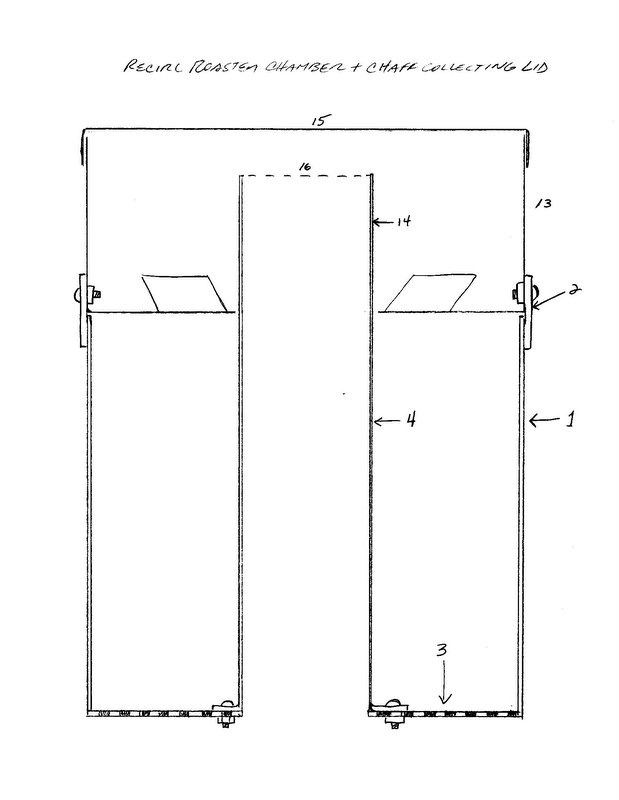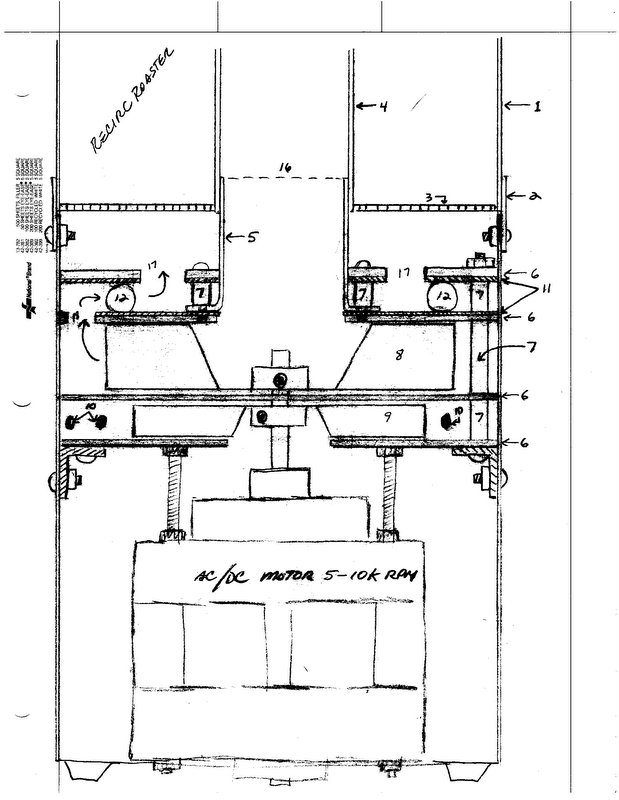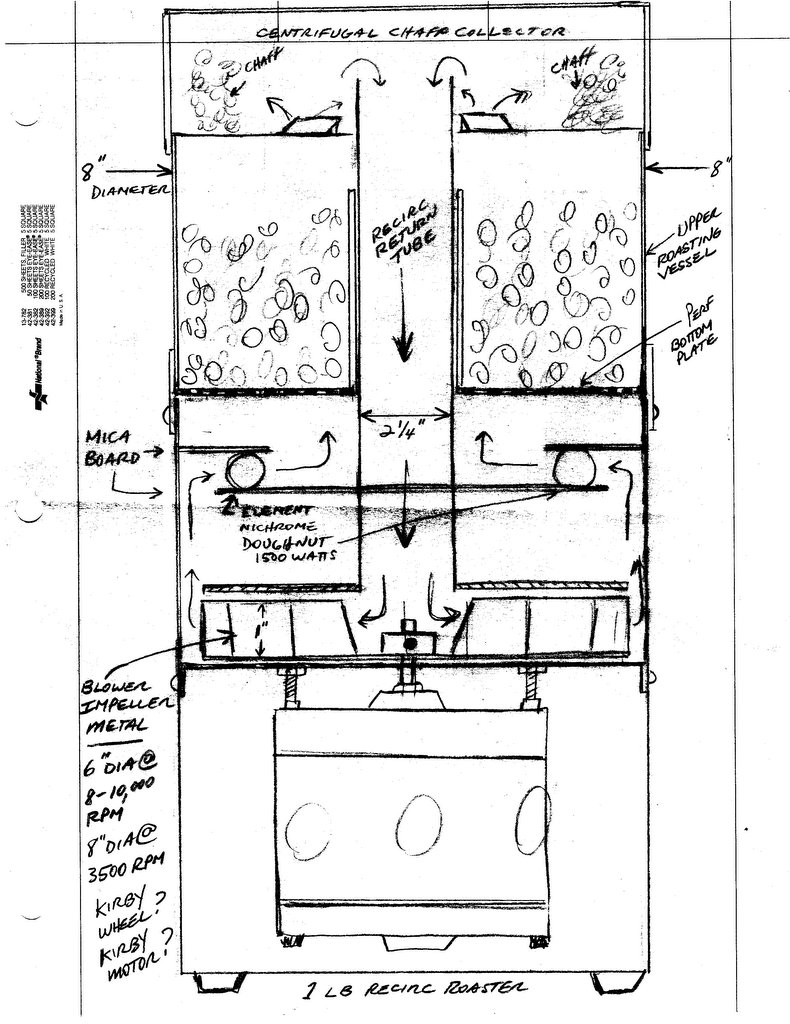
Login
Shoutbox
You must login to post a message.
renatoa
07/26/2024 3:49 PM
Bill grubbe and Jk, 

allenb
07/26/2024 5:15 AM
Spiderkw Welcome to HRO!


renatoa
07/24/2024 8:31 AM
ramiroflores and John123,

 ?
?

 ?
?renatoa
07/21/2024 1:18 AM
 , Luislobo
, Luisloborenatoa
07/19/2024 11:28 AM
Koepea, 

Forum Threads
Newest Threads
Skywalker roaster modsBackground Roast Iss...
Hello from Arkansas
TC4ESP
Green coffee reviews
Hottest Threads
| Skywalker roaster... | [375] |
| TC4ESP | [115] |
| War on Farmers by... | [47] |
| Adventures in flu... | [26] |
| Hello! (soon) Roa... | [17] |
Donations
Latest Donations
dmccallum - 10.00
JackH - 25.00
snwcmpr - 10.00
Anonymous - 2.00
Anonymous - 5.00
dmccallum - 10.00
JackH - 25.00
snwcmpr - 10.00
Anonymous - 2.00
Anonymous - 5.00
Users Online
Guests Online: 6
Members Online: 0
Total Members: 8,394
Newest Member: Bill grubbe
Members Online: 0
Total Members: 8,394
Newest Member: Bill grubbe
View Thread
Who is here? 1 guest(s)
|
Recirculating Flat Bottom Fluidbed Concept
|
|
| allenb |
Posted on 04/08/2023 2:32 PM
|
|
Administrator  Posts: 3869 Joined: February 23, 2010 |
In researching design options for my upcoming 2 lb fluidbed build and looking for ideas for the bubblebed project, I ran across a design concept and sketches from 2012 I had drawn up for a recirculating flat bottom fluidbed. I'm posting them here along with a write up description of the concept for anyone who would like to take on such a project. I claim no rights to the idea nor to the drawings so if anyone uses the materials, they are welcome to do what ever they wish with them. Post any questions you may have about it. Recirculating Flat Bottom Fluidbed Concept by allenb This roaster concept is for a compact, continuous perforated plate flat bottom roast chamber fluidbed that would mimic the bean flow patterns of a sonofresco roaster. This style of fluidbed allows a much shorter roast chamber height compared to a typical spouting bed design. Overall diameter of the roaster will hopefully not exceed 10” but will depend on diameter of your convection blower wheel. Flat bottom non-spouting fluidbeds by nature require much larger air flow than spouting bed designs and due to this, the roaster incorporates up to 100% recirculation to avoid the need for an excessively large heating element. Any exhaust of roasting air to the outside of the roaster needs to be designed and incorporated by the builder. NOTE: Blower wheel diameter, thickness and rpms are only estimates based on experience and final determination needs to be made by the builder through experimentation. Edit 4-9-23 Forgot to mention about cooling the beans. For end of roast cool down, simply remove the chaff assembly from the top of the roaster and ambient air will be drawn directly into the blower's suction and cool down will begin immediately. Design sketches from 2012 by allenb These sketches are for possible roaster layouts for a recirculating flat bottom fluidbed using a continuous perforated metal bottom similar to a sonofresco except with the inclusion of a central hot air return tube traveling from the center bottom of the chaff collector down through the middle of the perf plate to allow pulling exhaust air back to the convection fan inlet. Please excuse the differences between drawings where some elements of the design are missing due to being older renditions. Intended batch size is 1 lb (500 G) and larger Blower Details Blower wheel to be minimum of 6 1/2” diameter and appx 1 1/2” in depth. A 6 1/2” wheel will most likely require somewhere between 4000 and 8000 rpm to provide needed static pressure for bean lift. An 8” wheel will obviously need less. Preferred motor type is a universal motor to allow high rpm. Included in the design is a heat slinger wheel between the blower wheel and the motor. Motor cooling air path is through holes in the bottom of the roaster body, across the motor and out through openings in the side of the body. Chaff collector The chaff collector incorporates angled slots as it’s bottom inlet openings to allow creation of a centrifugal vortex keeping chaff at the extreme outer perimeter while chaff free air enters through the center tube screened opening and back down to the primary blower inlet. For the roaster body, one option is to find one of these medium sized coffee urns at a thrift store and carefully cut into needed sections: www.amazon.com/We...9&th=1 Drawing descriptions identification numbers 1.Roast chamber sheet metal wall 2.Retaining sleeve for holding roast chamber in place 3.Continous perforated plate 4.Roast chamber exhaust return tube 5.Blower return tube (slides inside of roast chamber return tube) 6.16 gauge aluminum plate 7.Aluminum or steel spacer standoffs for separating and securing plates. 8.Primary convection blower wheel 9.Motor heat slinger blower wheel 10.Heat slinger air exhaust ports through exterior of roaster body 11.Mica board insulator 12.Popper style nichrome heater coil 13.Chaff collector/lid assembly body 14.Chaff collector/lid assembly section of exhaust return tube 15.Chaff collector cover 16.Chaff collector exhaust tube screen guard (to prevent dropping foreighn objects down into heater assembly.
allenb attached the following images:
Edited by allenb on 04/09/2023 9:47 AM 1/2 lb and 1 lb drum, Siemens Sirocco fluidbed, presspot, chemex, cajun biggin brewer from the backwoods of Louisiana
|
|
|
|
| fpcf |
Posted on 04/08/2023 3:11 PM
|
|
Newbie  Posts: 5 Joined: December 27, 2022 |
Great! I like this concept of saving energy and being more flexible with the heating. But keep in mind you will have a very hot blower engine and you will have all exhausts from the coffee-beans especially acrolein, acryllamid and CO and all the fumes in your circulation. You will loose all your advantages of fluid bed roasting - no exhausts on your beans. I'll manage these problems with a heat exchanger - just a simple automobile Intercooler. Two advantages, I can heat my fresh air but separated from the exhausts and I can mix the heated air with cold fresh air, so my blower engine is not affected by too much heat. |
|
|
|
| renatoa |
Posted on 04/08/2023 3:33 PM
|
|
Administrator  Posts: 3104 Joined: September 30, 2016 |
What about smoke ? It is not removed by a centrifugal system, like chaff... For this reason, my vision about a partial heat recovery system is like a heat exchanger... the hot air exhausted by cyclone will heat a pipe that feed the heaters with slightly warmish air, thus partial recovery, not integral, as in this case, but clean of smoke. |
|
|
|
| allenb |
Posted on 04/08/2023 6:06 PM
|
|
Administrator  Posts: 3869 Joined: February 23, 2010 |
All of the different types of roasters, whether it be drum, fluidbed, turbo oven based, pan, ceramic semi enclosed pan, 100% radiant... all have tradeoffs and specific pluses and minuses. Let's talk about roasters that mostly recirc and if the negatives mentioned prevent them from producing a good cup. First off, would it be fair to say that a turbo oven roaster is incapable of producing a great tasting roast due to the negative effects of nearly 100% recirc? Is there a good chance that the Typhoon roasters, which recirc anywhere from 50% to 90% of their roasting emissions also are incapable? The roaster design I posted was conceived mainly to be an option for anyone who likes the fluidbed process but would like to roast larger quantities than a once through will afford without excessive power demand. As mentioned in the design notes, the builder needs to determine if and how much % of recirc they want to occur. For the record, I've cupped coffees that were roasted in fully recirculated environments and pristine environments and both cupped equally great. 1/2 lb and 1 lb drum, Siemens Sirocco fluidbed, presspot, chemex, cajun biggin brewer from the backwoods of Louisiana
|
|
|
|
| allenb |
Posted on 04/08/2023 6:16 PM
|
|
Administrator  Posts: 3869 Joined: February 23, 2010 |
Quote But keep in mind you will have a very hot blower engine if the design is followed, the motor will not overheat. As is shown in the design, there is a heat slinging blower wheel attached to the motor shaft which draws air across the motor and discharges the heat out of the roaster enclosure. 1/2 lb and 1 lb drum, Siemens Sirocco fluidbed, presspot, chemex, cajun biggin brewer from the backwoods of Louisiana
|
|
|
|
| renatoa |
Posted on 04/09/2023 2:23 AM
|
|
Administrator  Posts: 3104 Joined: September 30, 2016 |
Right, the motor will stay cool especially because it has the lowest position in the stack, and heat don't go down, always up. |
|
|
|
| Jump to Forum: |
Powered by PHP-Fusion Copyright © 2024 PHP-Fusion Inc
Released as free software without warranties under GNU Affero GPL v3
Designed with ♥ by NetriXHosted by skpacman







